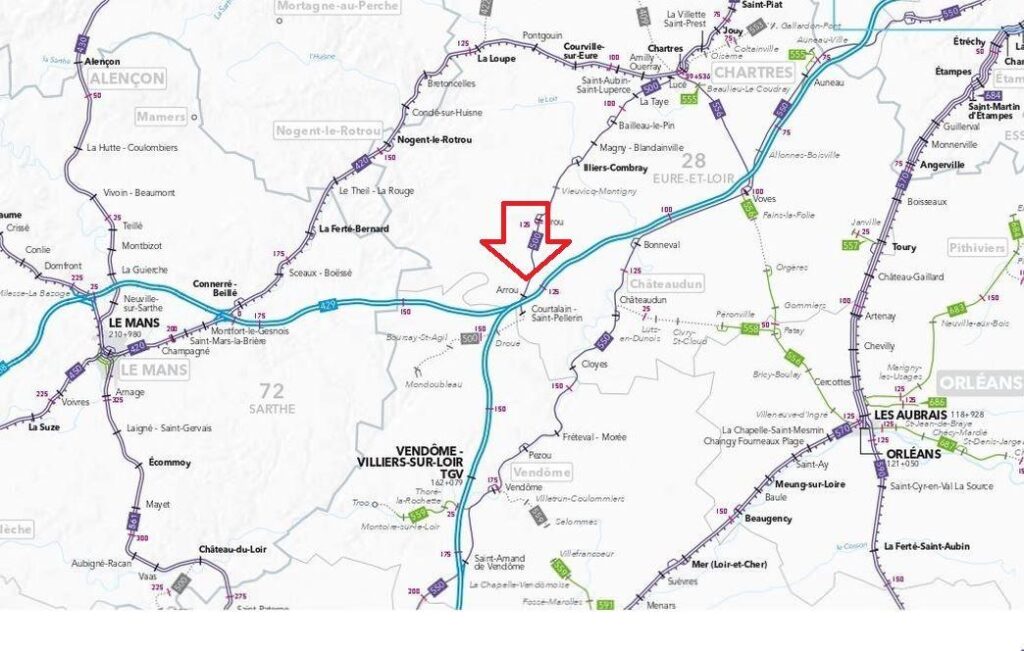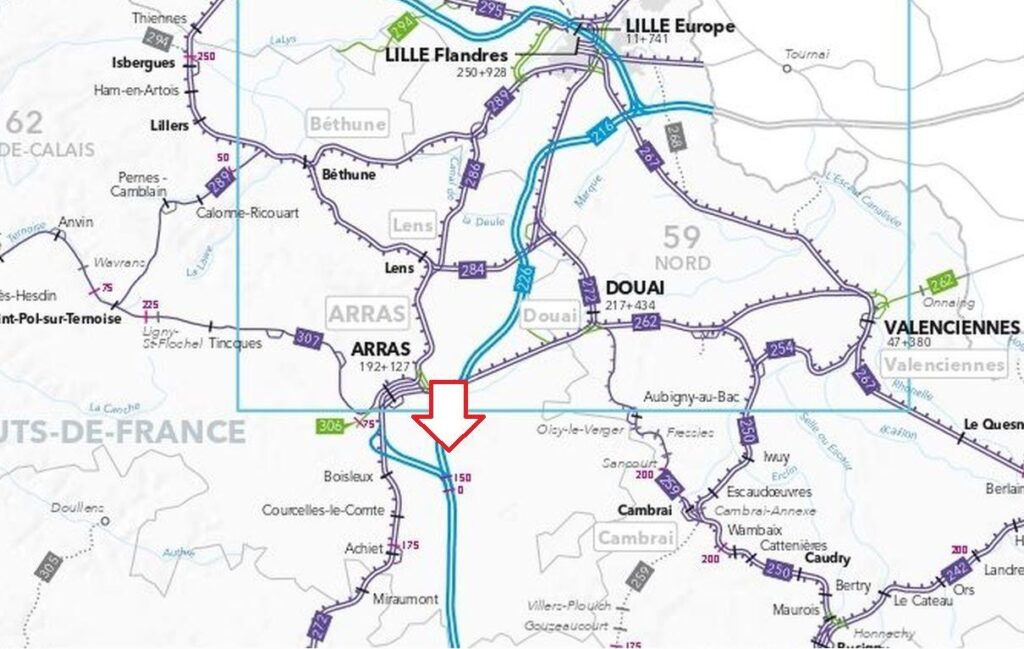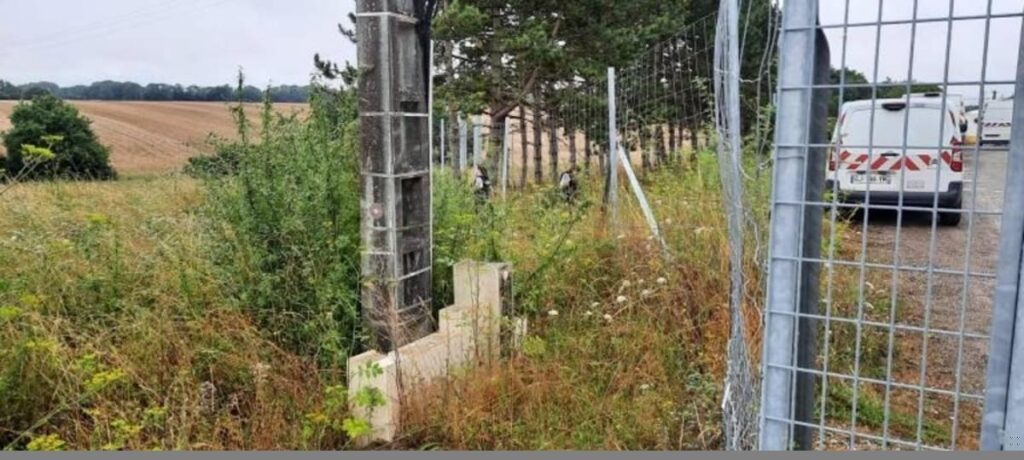 Vandières (Meurthe-et-Moselle), July 26, 2024. Fiber optic cables set on fire during coordinated sabotage of the TGV network.
Vandières (Meurthe-et-Moselle), July 26, 2024. Fiber optic cables set on fire during coordinated sabotage of the TGV network.
On the night of Thursday July 25 to Friday July 26, just hours before the opening ceremony of the Paris Olympic Games, high-speed train (TGV) lines were attacked in all directions leading to the capital. A “massive, coordinated attack to paralyze the network”, as many newspapers headlined. On Friday alone, “250,000 customers” were affected by these acts of sabotage, and “almost 800,000 over the weekend”, according to the rail company. “Through the SNCF, it’s a part of France that’s being attacked, and it’s the French people who are being attacked”, SNCF boss Jean-Pierre Farandou immediately declared, while denouncing the saboteurs as “a bunch of kooks, irresponsible people”. For her part, Sports Minister Amélie Oudéa-Castera couldn’t contain her anger: “These are the Games for athletes who have been dreaming of them for years and who are fighting for the Holy Grail of climbing these podiums, and we’re going to sabotage that for them! Playing against the Games is playing against France, it’s playing against your side, it’s playing against your country.”
In the Nord region, the TGV network was sabotaged at Croisilles, near Arras (Pas-de-Calais), cutting off international rail traffic to London, Belgium, the Netherlands and Germany. In the east, the network was cut off at two separate points: between the Meuse TGV station and Lamorville (Meuse), and between Pagny-sur-Moselle and Vandières (Meurthe-et-Moselle). To the west, the line was cut at Vald’Yerre, near Courtalain (Eure-et-Loire), affecting both the direction to Brittany (Rennes, etc.) and Gironde (Bordeaux, etc.). And on the South-East line (Paris-Lyon-Marseille), an attempt at sabotage took place at Vertigny (Yonne), which apparently failed after the saboteurs were surprised “by railwaymen who were carrying out maintenance operations during the night”, leading the gendarmes to get their hands on “incendiary devices” which had not been ignited and were immediately sent to the lab.

Map of sabotage on high-speed lines on the night of July 25-26, 2024 (Le Monde)
Furthermore, in the Paris suburbs, also concerning the network to the west, an overhead power line was ripped down between Montparnasse station and Vanves-Malakoff (Hauts-de-Seine) by a TGV train that tried to use a more conventional line that wasn’t designed for it (Transilien’s N), further aggravating the consequence of the sabotage… which, for the SNCF, means an incident “linked to the malicious acts committed on the Atlantic high-speed line”. As for the background, its CEO deplored “the obvious desire to cut Paris off from its main high-speed lines just before the opening ceremony of the Olympic Games”, in a press conference held on Saturday July 27.

All in all, this pre-Olympic summer night was officially marked by five targeted sites across France, with four successful sabotages and one thwarted, between 1am and 5.30am. Each time, fiber optic cables were severed or set on fire, in small channels running along the tracks, and located not far from signal boxes coordinating important nodes of rail traffic, where the tracks split in several directions. “With [such] a fire, we’re actually losing two branches of the network each time”, explained SNCF Réseau boss Matthieu Chabanel (Le Figaro, 26/7). Indeed, these now burnt-out cables control the switch motors, but are also used to transmit information to the signaling stations. As soon as the signaling or switch control cables were damaged, cut or burned, the systems immediately went into red light mode,” explains Vincent Téton, Deputy Director General of Operations and Production at SNCF Réseau, who is also in charge of crisis management coordination. “Trains running on the affected tracks then stopped automatically”. (Le Parisien, 27/7).

To repair these special cables once they’ve been cut or burnt out, technicians first have to replace them, bringing them in from sites that are sometimes far away (SNCF has “two large storage centers, one on the Atlantic coast, the other in the Grand-Est region”, as Le Parisien informs us), then the cable technicians have to reestablish connectivity in a tedious process, as “these cables each have wires. For example, if you have 50 cables, each with 10 threads, that’s 500 threads that have to be reconnected one by one”, and then they have to retest all the electrical relays to make sure they’re working properly. According to La Voix du Nord (26/7), on the sabotaged northern line at Croisilles, around fifty cables were burnt, severely affecting the strategic signal box located there (PRCI: Poste relais à commande informatique). And on the sabotaged eastern axis at Vandières, no fewer than six cable shafts were set on fire, according to L’Est Républicain (26/7).
 The target location on the TGV Atlantique (La Dépêche, 26/7: “Why the sabotage sites were not chosen at random”)
The target location on the TGV Atlantique (La Dépêche, 26/7: “Why the sabotage sites were not chosen at random”)

The target location on the TGV North (same source)

The target location on the TGV East (same source)
In short, these cuts in fiber optic cable routes at the right place (along rail lines near line junctions) and at the right time (a few hours before the opening ceremony of the 2024 Olympic Games), with rudimentary means like gasoline, managed to paralyze a good part of the TGV network and spoil an Olympic celebration that was supposed to go off without a hitch.
On Friday July 26 and Saturday July 27, SNCF chose to continue running TGV trains, but with many delays to departures and arrivals, as they had to use classic lines and geographical deviations or move at walking pace, not to mention all those that were cancelled. Like the “25% of Eurostar trains between Paris and London and Paris and Brussels”; like these “4 trains with athletes on board” on Friday, of which only the “first two arrived” in Paris on time (the 3rd was delayed, and the team of athletes on the 4th had to be transferred to another train), or the trains carrying some of the volunteers selected to ensure the smooth running of the Olympic Games, as well as several thousand spectators on their way to Paris, all of whom will miss the opening ceremony and the first events.
In all, 200 of the 750 TGV trains initially scheduled to run this weekend have simply been cancelled, while the others have accumulated thousands of hours of delays. The entire high-speed rail network is not expected to return to normal before the morning of Monday July 29.

Vald’Yerre (Eure-et-Loire), July 26, 2024. Fiber optic cables set on fire during coordinated sabotage of the TGV network.

The cut fence nearby…
As for the French State, the Paris public prosecutor’s office, and more specifically the National Jurisdiction for Combating Organized Crime (Junalco) created within it in 2020 to deal with the most complex cases, has announced that it has taken over the investigation for “all the deliberate damage caused to SNCF sites”. The public prosecutor’s office has opened an investigation into charges of “damage to property likely to harm the fundamental interests of the nation”, “damage and attempted damage by dangerous means in an organized gang”, “attacks on an automated data processing system in an organized gang” and “criminal conspiracy to commit these crimes and offenses”. The police and gendarmerie directorates were then jointly tasked with the investigation, with the latter’s anti-terrorist sub-directorate (SDAT) designated as the coordinating unit. In each region where an act of sabotage has taken place, the Gendarmerie’s Sections de Recherches (SR) are in charge of local clues gathering: Lille, Dijon, Orléans and Nancy, while they have trumpeted on state radio (France info & inter, 26/7) that they have put “more than 50 investigators” on the case.
Finally, the newspapers point out that similar sabotages have occurred in recent years in Germany (perhaps they’re referring to the coordinated sabotage carried out in September 2023] against freight rail traffic in Hamburg, or to the one in October 2022 that paralyzed the north of the country), but also in France, as at the start of the movement against pension reform in January 2023, when the LGV Est high-speed line was attacked at Vaires-sur-Marne, paralyzing the Gare de l’Est in Paris for two days. In any case, in view of the “modus operandi”, which is “typical of the ultra-left” (France Bleu, 26/7), the 3,000 individuals listed in this police category are a “preferred lead” for investigators, according to what was deliberately leaked to the media on Friday. This theory was partly reinforced the day after the sabotage, on Saturday July 27, with the arrival of a communiqué signed by an “unexpected delegation”.
[Summary from national press, July 26-27, 2024]
via: sansnom
Translated by Act for freedom now!
